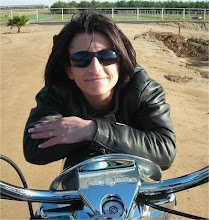View Larger Map
 Jackson has a 1,217 elevation and approximately 4,317 population.
Jackson has a 1,217 elevation and approximately 4,317 population.
Jackson, named after Colonel Alden Jackson, was founded in 1848 around a year-round spring. Settlement of the region by American pioneers was stimulated by the discovery of gold in the Sierra foothills around 1848. The settlement was named for a local lawyer who was liked by miners named Alden Appola Moore Jackson. Although Amador County was an important mining center, its County seat of Jackson was not typical of the early gold camps. The camp grew quickly, besides being a popular mining spot, it was also a convenient stopping place on the road from Sacramento to the Southern Mines. The camp became an important supply and transportation center for the neighboring towns, and by 1850 the population had reached an estimated 1,500. Jackson grew first as a watering hole for cattle, then as one of the earliest and most durable of the Mother Lode's hardrock mining areas.
In 1853, Jackson became the county seat of newly formed Amador County, California. Previously, from 1851-1852, it had been the county seat of Calaveras County. Jackson may therefore be the only city to have ever been county seat of two different counties at different times.
Placer mining gave out by the 1860s, replaced by hard rock mining. One of the town's most prominent historical landmarks, the Kennedy Mine, began operation in 1860; at the time of its closure during World War II in 1942, it was the deepest gold mine in North America, at 1802 meters; (5912 ft). On August 27, 1922 47 miners became trapped when a fire broke out in the Argonaut mine. All 47 men died in the fire but it wasn't until over a year later that the last body was recovered. The Argonaut mine incident was the worst gold mine disaster in US history.
In Oct, 1942 the US government passed the War Production Board Limitation Order which signaled the demise of gold mining in California. The government needed men for the war and gold was not considered a strategic war metal.

Inscription: In 1848, was a village of huts and tents called
"BOTTILEAS”
by the Mexicans from the bottles strewn about by those who tarried here.
In 1849, it was named
JACKSON
for Colonel Jackson an early day resident.
In 1853, Amador County was carved out of
Calaveras County and Jackson
became its County Seat.
In 1886, The Order of
NATIVE DAUGHTERS OF THE GOLDEN WEST
was founded here and to commemorate
the semi-centennial year of the order
this monument is erected and dedicated. I have a little dilemma with this photo, so let me explain. The day I took this pic, it was boarded up. Why? Well some people said it wasn't up to code which makes me sad, because we have always stopped here en route to another destination, to have a cool beverage or two.
I have a little dilemma with this photo, so let me explain. The day I took this pic, it was boarded up. Why? Well some people said it wasn't up to code which makes me sad, because we have always stopped here en route to another destination, to have a cool beverage or two.
 This is what the building looks like from another view.
This is what the building looks like from another view.
This is the side view of the Wells Fargo Building. Inscription: Wells Fargo Building
Inscription: Wells Fargo Building
First structure on site built in 1857. Bar portion of building erected in 1856 as Drug Store. Wells Fargo Express Agency moved to store briefly in 1887. Two story section built in 1858, used as a General Store. Easterly one story section built in 1898. Wells Fargo Express located next door 1884-1919.
Ginocchio family owned building from 1857 until sold to present owners. Dan Vukajlovich and Jim Smallfield opened Wells Fargo Club in 1955 and purchased building in 1965.
Dedicated by the Native Sons of the Golden West March 12, 1983.
Joseph Ursino Grand President- In Memory of James Phelan, U.S. Senator
 These pics are looking North, opposite The National Hotel.
These pics are looking North, opposite The National Hotel.




